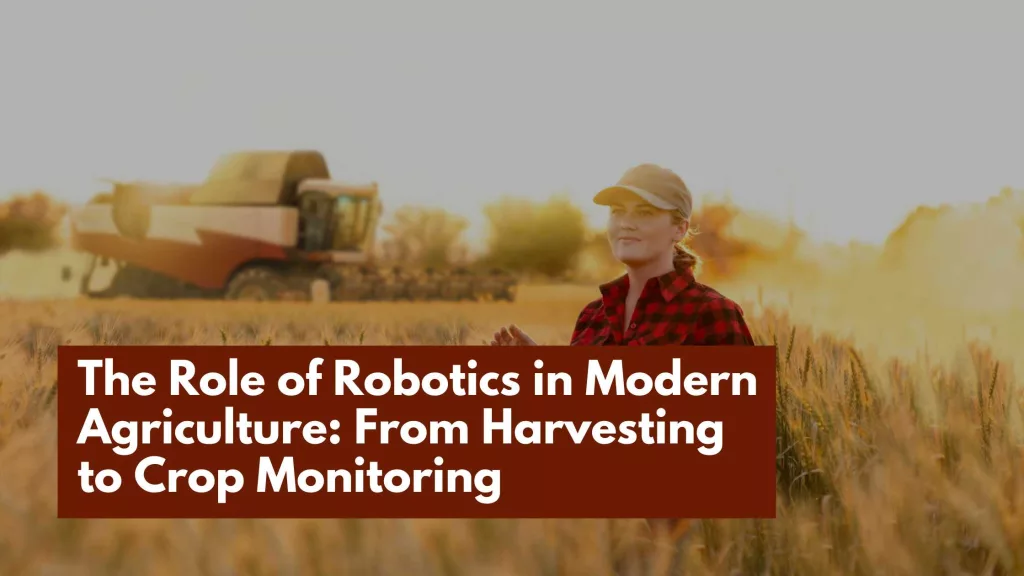Farming has been the bedrock for many industries, providing them with raw materials and sustenance for many years. It was the first primary business of Human civilization. Humans started farming with the available natural resources, which later developed into organic farming conducted with conventional methods. The invented traditional farming methods were carried on by generations, resulting in a thriving agriculture sector.
The invention of modern agricultural techniques has brought about a developmental revolution in the agriculture sector. However, this development in modern agriculture has come with some challenges that can harm the profitability of farms. Farmers face a complex web of factors, including unpredictable weather patterns, environmental concerns, resource scarcity, and market fluctuations that impact their bottom line. In this blog post, we will explore numerous tactics and techniques that farmers may use to protect and improve the profitability of their farms in the face of these difficulties.
Embrace Sustainable Agricultural Practices – Farmers
Sustainability is not just a fashionable term but a crucial fundamental approach in agriculture that can impact a farm’s profitability. Adopting sustainability can help farmers reduce input costs, improve soil health, and mitigate the environmental impacts of farming operations. These are some sustainable farming practices farmers can adopt:
- Crop Rotation and Diversification: It’s a highly beneficial practice farmers can adopt to maintain soil fertility. Alternating the types of crops in a specific area keeps the soil fertility in that area and reduces the risk of pests.
- Conservation Tillage: Reduced or no-till farming can also maintain soil fertility as it minimizes disturbance and erosion of the soil.
- Precision Agriculture: Precision technologies such as GPS-guided machinery optimize using water, pesticides, and fertilizers. This reduces waste and increases the profitability and efficiency of farming practices.
Invest in Technology and Innovation
The digital revolution in the farming sector results in elevated development. Farmers who embrace technology also gain a competitive edge and significant profitability.
- Data-Driven Decision-Making: Farmers can make informed decisions about harvesting, marketing, crop performance, weather patterns, market trends, and farming resources through data collection and analysis. This can increase the productivity and profitability of their farms.
- Automation and Robotics: Farmers can operate a few farming tasks with the help of automation. Automation and robotic systems can work tirelessly and reduce labor costs and time, increasing efficiency.
- Biotechnology: Genetically modified crops are more efficient, minimize chemical use, and lead to higher yields. They are modified using biotechnologies, making them resistant to pests, disease, and harsh environmental conditions.
- Genetically modified crops resistant to pests, diseases, and extreme environmental conditions can lead to higher yields and reduced chemical use.
Manage Risks Effectively
Agriculture entails risk because of external variables, including weather, pests, and market changes. For determining profitability, it is crucial to manage these risks.
- Crop Insurance: Crop insurance investments offer protection from losses caused by unfavorable weather events, calamities, diseases, or market volatility.
- Diversification of Income Streams: Depending only on one crop for production is risky for farmers. They must keep exploring other income streams as backup plans. They can practice agritourism, farm-to-table sales, and the sale of value-added products. This can stabilize or diversify their means of income generation.
- Hedging Techniques: For commodity crops, futures and options contracts can help lock in prices and offer protection from market fluctuations.
Efficient Resource Management
Optimizing resource use in agricultural practices can reduce farming costs and conserve the environment.
- Water Management: Adopting efficient irrigation systems like drip irrigation can minimize water waste. Storing and utilizing rainwater can also help in the off rainy days.
- Energy Efficiency: Farming practices use energy at the commercial level. Shifting to renewable sources such as solar panels or wind turbines for energy consumption can reduce expenses in the long run.
- Nutrient Management: Precision agriculture can optimize the application of fertilizers and nutrients in the soil based on soil testing. The right amount of fertilizer application prevents harm to the environment and crops and increases profitability.
Continuous Learning and Adaptation
The agriculture sector is developing rapidly. Thus, farmers need to stay informed and aware to adapt to changes that can lead them to profitability
- Education and Training: Farmers must be educated and trained to learn the emerging farming techniques and stay informed. They can attend workshops, seminars, and online courses to learn about the latest farming techniques, technology, and market trends.
- Networking: Farmers can interact with other farmers, agricultural organizations, and industry experts to get innovative ideas and valuable insights. This can improve their knowledge and profitability as well.
- Flexibility in Planning: Farmers should stay prepared to adopt new strategies and information according to changing circumstances. It is essential for long-term success.
Focus on Marketing and Branding
Effective marketing can create a strong brand identity, attract customers, and even command premium prices for farm products.
- Local and Direct Marketing: Farmers can sell their produce directly to consumers through farmer’s markets, online platforms, and community-supported agriculture (CSA). This can increase their profits by eliminating the interference of intermediaries.
- Value-Added Products: Farmers can process raw farm products into value-added products like jam, sauces, or artisanal products. This can lead to enhanced income for the farmers.
- Branding and Storytelling: Farmers can build brand loyalty by sharing their farm story, sustainable practices, and commitment to quality. This can build brand loyalty and connect farmers with customers.
Prioritize Soil Health
Healthy soil is the foundation of a successful farm and an essential farming component. Farmers can enhance yields and reduce input costs by nurturing the soil. These practices can lead to healthy soil:
- Cover Crops: Planting cover crops during off-seasons can prevent soil erosion, improve soil structure, and enhance nutrient content.
- Compost and Organic Matter: Regularly adding organic matter and compost to the soil can enrich it. The soil becomes healthy and efficient in water-holding and nutrient retention.
- Soil Testing: Regular soil testing is essential to understanding the nutrient levels and pH of the soil. Farmers can detect precise fertilization amounts by testing the soil.
Conclusion
In conclusion, farmers face many challenges in the dynamic modern agriculture landscape. However, the development in agriculture has increased the profitability, efficiency, and production of farms. Farmers can embrace sustainable farming practices and follow the tips mentioned in the article to enhance their farm’s profitability.
Although modern techniques have revolutionized farming development, the key lies in balancing tradition and innovation. With the right strategies and an approach towards sustainability, farmers can combat the inherited farming challenges and carve out profitability.




Farm profitability is so important for sustainability! Excited to dive into this post and learn some valuable tips.
Absolutely! I couldn’t agree more. Farm profitability is indeed crucial for sustainability. I’m looking forward to exploring the post and picking up some valuable insights. Thanks for sharing your excitement!
Protecting profitability on the farm is crucial! Looking forward to learning some practical tips and strategies from this post.
Absolutely! Keeping the farm profitable is key. Can’t wait to see what insights the post has in store for us!
This sounds like a really practical and important topic! I’m always curious about the strategies farmers employ to safeguard their profitability in such a dynamic industry. Can’t wait to read the post and pick up some valuable tips. Thanks for sharing this insightful topic!
Absolutely! Protecting farm profitability is crucial for the sustainability of agriculture, so I’m glad you’re interested in exploring this topic. There are definitely many strategies and approaches that farmers can take, and I hope the post provides some valuable insights and actionable advice.
Finally, someone’s addressing the real challenges farmers face in staying profitable. Looking forward to some practical advice in this post. Farming isn’t just about hard work, it’s about working smarter too!
Absolutely! Farming is all about finding that balance between hard work and smart strategies. It’s great to see more attention being given to the profitability aspect of farming. Hopefully, this post will offer some valuable insights that can make a real difference for farmers. Thanks for sharing your thoughts!
I love how this post breaks down actionable steps for farmers to safeguard their profitability. From diversifying crops to embracing technology, there’s something here for everyone. Great job!
Thank you so much for your comment! We’re delighted to hear that you appreciated the actionable steps outlined in the post. Diversifying crops and embracing technology are indeed crucial strategies for safeguarding profitability in today’s agricultural landscape. We’re glad you found value in our suggestions, and we hope they prove helpful to farmers of all kinds. If you have any further insights or experiences to share, we’d love to hear them. Thanks again for your support!
Wow, just finished reading this blog on protecting farm profitability, and I’m feeling inspired! It’s awesome to see practical tips for farmers to thrive while also caring for their land and resources. Great stuff!
Absolutely! I’m glad you found the blog inspiring! It’s essential for farmers to strike a balance between profitability and sustainability, and it’s heartening to see the interest in implementing practices that benefit both. Here’s to a bright future for farmers and their endeavors!
This blog post is a game-changer! I love how it’s shedding light on ways farmers can stay profitable while also being mindful of sustainability. Super informative and empowering stuff!
Absolutely! I’m thrilled you found the blog post helpful and empowering! It’s all about finding that sweet spot where profitability meets sustainability, and it’s fantastic to see the interest in making farming practices more resilient and eco-friendly. Here’s to a future where farms thrive economically while also nurturing our environment!
Such a practical advice! It’s reassuring to see strategies laid out for safeguarding farm income. Really helpful insights for farmers navigating challenges.
Great read! It’s awesome to see practical tips on how farmers can safeguard their farm’s profitability. Super useful insights!
Really enjoyed reading this blog post! It’s great to see practical tips on how farmers can ensure the profitability of their farms. Definitely some valuable insights to take away.
Just wrapped up the ‘Manage Risks Effectively’ part of that farming profitability blog post—really insightful! It’s impressive how the post highlights proactive approaches to handle uncertainties in farming. Being prepared is key in such a dynamic industry!
Just caught up on the ‘Invest in Technology and Innovation’ section of that farming profitability blog post—so enlightening! It’s awesome to see how embracing new tech can not only boost yields but also streamline operations and cut costs. Farmers are truly at the forefront of innovation!
Sustainable agricultural practices really do pay off – great read!
This post has some great tips for farmers to maintain profitability – really insightful!
Prioritizing soil health is such a smart move for long-term profitability.
Focusing on marketing and branding can make a huge difference for farmers.
Continuous learning and adaptation are so important in the ever-changing ag industry.
Efficient resource management is key to keeping costs down and profits up.
Risk management strategies for farmers are super helpful – loved this section.
Investing in technology and innovation can truly revolutionize a farm’s productivity.
Embracing sustainable practices is so crucial for long-term farm success.